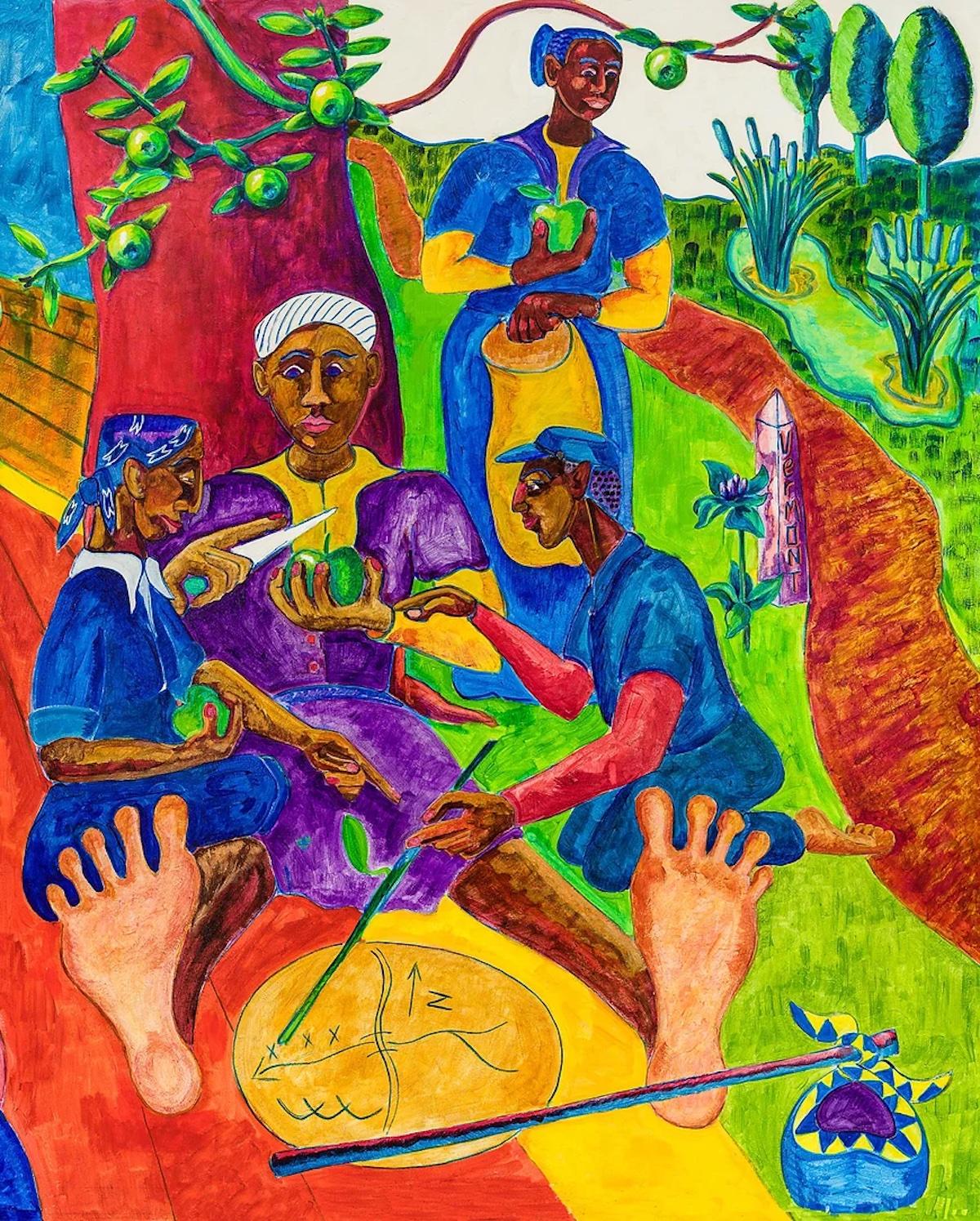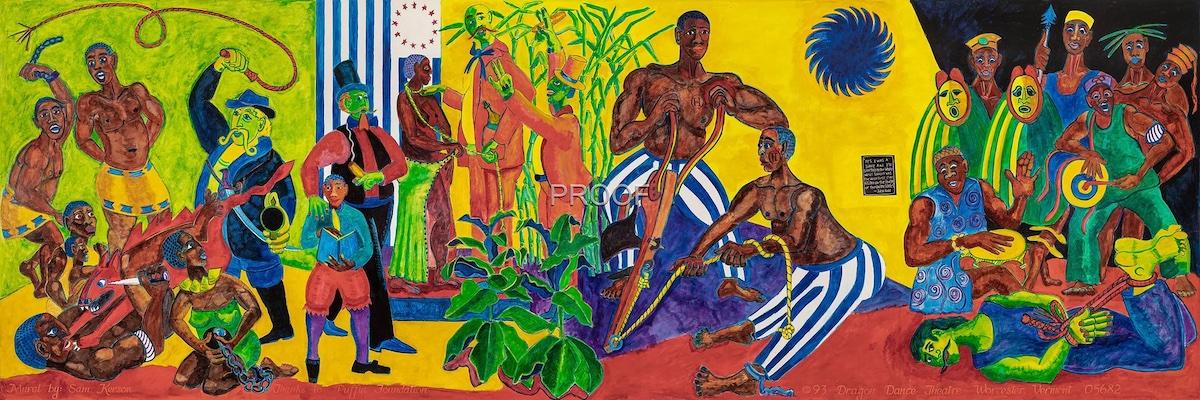When they were unveiled, the murals were praised, but as early as 2001 they began to attract controversy, with VLS receiving complaints from community members who felt uncomfortable with how the mural presented Black people. According to the opinion, viewers in 2013 took offense to the way Kerson, who is white, depicted the enslaved African people, “in a cartoonish, almost animalistic style” with “large lips, startled eyes, big hips and muscles eerily similar to ‘Sambos’ or other racist…caricatures.”
In light of these complaints, the following year, VLS installed plaques beside the murals. But in 2020, after the George Floyd protests, calls to remove the murals escalated. Over 100 students, alumni, faculty, and staff sent a petition to the law school’s president demanding the removal and replacement of the mural.

























![DEl Kathryn Barton [Australian b. 1972] the more than human love , 2025 Acrylic on French linen 78 3/4 x 137 3/4 inches 200 x 350 cm Framed dimensions: 79 7/8 x 139 inches 203 x 353 cm](/sites/default/files/styles/image_5_column/public/ab15211bartonthe-more-human-lovelg.jpg?itok=wW_Qrve3)



